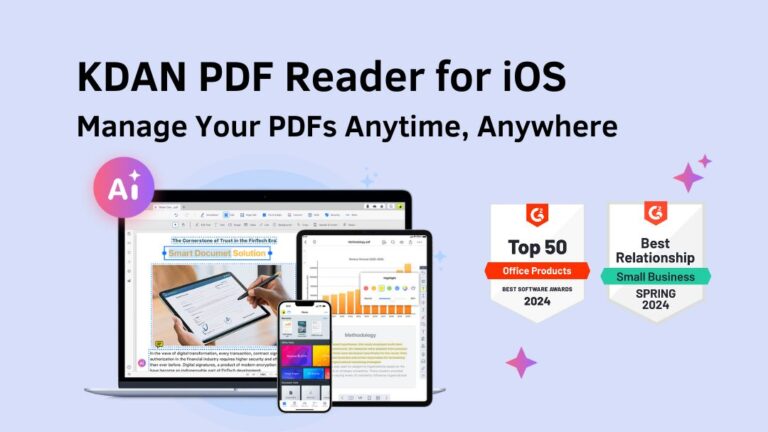Optimizing Compliance Efforts with AI-Powered Software for Businesses
Regulatory compliance has become increasingly complex across industries, with businesses facing ever-evolving laws, stricter enforcement, and higher penalties for non-compliance. From data privacy regulations like the General Data Protection Regulation (GDPR) and the California Consumer Privacy Act (CCPA) to industry-specific mandates in healthcare, finance, and manufacturing, staying compliant is both a legal necessity and a strategic imperative.
However, ensuring compliance is no easy task. Many businesses struggle with manually tracking regulatory changes, maintaining accurate records, and conducting internal audits—all of which can be time-consuming, prone to errors, and costly. Non-compliance can lead to significant financial penalties, operational disruptions, and reputational damage.
To address these challenges, companies are turning to AI-powered compliance software for businesses, which automates key compliance processes, enhances accuracy, and provides real-time monitoring of regulatory updates. By leveraging artificial intelligence, companies can streamline compliance efforts and proactively mitigate risks, improve efficiency, and reduce costs. In this blog post, we explore how AI-driven compliance solutions transform how businesses navigate the complex regulatory landscape.
Key Benefits of AI-Powered Compliance Software
AI-powered compliance software for businesses provides significant advantages by automating processes, reducing errors, and enhancing overall efficiency. With ever-changing regulations, companies need reliable tools to stay compliant and avoid costly penalties. By leveraging AI, software for businesses can quickly analyze vast amounts of data, identify potential risks, and ensure adherence to industry standards. This technology also helps organizations streamline reporting, making audits and regulatory filings more accurate and efficient. Ultimately, investing in AI-powered compliance software for businesses allows companies to maintain regulatory compliance while focusing on growth and innovation. Here are the key benefits:
Enhanced Accuracy and Efficiency
Manual compliance processes are not only time-consuming but also prone to human errors, which can lead to costly violations. AI-powered compliance software automates tasks such as document processing and management, reporting, and risk assessment, ensuring that businesses adhere to regulations with greater precision. Machine learning algorithms can quickly analyze large volumes of data, detect inconsistencies, and flag potential compliance issues before they become critical.
Cost Savings
Non-compliance can result in hefty fines, legal fees, and reputational damage. AI-driven compliance solutions help businesses avoid these costs by proactively monitoring regulations and ensuring adherence. Additionally, automation reduces the need for extensive human oversight, cutting down on operational expenses and freeing up resources for more strategic initiatives.
Real-Time Regulatory Updates
Laws and regulations are constantly evolving, and businesses must stay updated to remain compliant. AI-powered tools continuously scan regulatory sources, government websites, and legal databases to identify relevant changes. These systems provide real-time alerts and recommendations, allowing companies to quickly adapt their policies and procedures without scrambling to keep up with new mandates.
Improved Risk Management
AI enhances risk assessment by analyzing patterns, predicting potential compliance breaches, and recommending preventive measures. With predictive analytics, businesses can identify vulnerabilities before they escalate into legal or financial liabilities. By integrating AI into compliance workflows, organizations can take a proactive approach to risk management and reduce their exposure to regulatory violations.
Scalability
As businesses grow, so do their compliance responsibilities. AI-powered compliance software solutions are designed to scale with an organization, adapting to new regulatory requirements, increasing data volumes, and expanding operational complexity. Whether a company is entering new markets or handling more customers, AI-driven compliance tools ensure that regulatory obligations are met without overwhelming internal teams.
AI Implementation Best Practices for Compliance Management

Photo by Christina Morillo | Source: Pexels
Successfully integrating AI-powered compliance software into a business requires careful planning and execution. To maximize the benefits of automation and risk management, companies should follow these best practices:
Assess Business Needs and Compliance Requirements
Before selecting a compliance solution, businesses should thoroughly assess their specific regulatory requirements. This includes identifying industry regulations, data protection laws, and reporting obligations that apply to their operations. Companies should also evaluate existing compliance challenges, such as manual workflows, audit inefficiencies, or gaps in risk assessment, to determine how AI can best address these issues.
Choose the Right AI-Powered Solution
Not all AI compliance tools are created equal, and businesses must select software that aligns with their industry, company size, and operational complexity. Key factors to consider include:
- Regulatory coverage: Ensuring the software supports relevant laws and industry standards.
- Integration capabilities: Checking whether the tool can seamlessly connect with existing enterprise systems, such as HR, finance, or legal platforms.
- Customization and scalability: Choosing a solution that can adapt as regulations change and the business expands.
- User-friendliness: Ensuring the interface is intuitive and accessible to compliance teams.
Train Employees and Integrate AI Compliance Tools into Workflows
AI-powered compliance software is only effective when employees understand how to use it. While AI automates processes and provides insights, teams must know how to interpret and apply its findings correctly. Training ensures compliance teams can confidently use AI tools to improve accuracy and efficiency.
- How the AI System Monitors Compliance and Generates Insights: Employees should understand how AI scans data, tracks regulatory changes, and detects compliance risks.
- How to Interpret Alerts and Reports: Training should cover how to read AI-generated reports, recognize risk levels, and take appropriate action.
- Best Practices for Using AI Alongside Human Oversight: AI enhances compliance, but human review is still essential for handling complex legal issues and refining AI accuracy.
Moreover, businesses should integrate AI-driven compliance processes into existing workflows to ensure smooth adoption. This might include automating document reviews, audit tracking, and policy updates within the organization’s standard operating procedures.
Regularly Update and Refine AI Models
Regulatory requirements and business needs evolve over time, so AI compliance systems must be continuously updated to stay effective. Without proper updates, AI tools may provide outdated or incorrect compliance recommendations, putting businesses at risk of violations. Here’s how companies can ensure their AI compliance software stays effective:
- Regularly Update AI Models with New Regulatory Data: Laws and regulations change frequently, and AI models must be updated to reflect these changes. For example, if a government introduces new data privacy laws like the California Consumer Privacy Act (CCPA) or updates existing ones like the General Data Protection Regulation (GDPR), an AI compliance system must be trained on the new legal requirements. Without updates, the AI may fail to recognize new obligations, leading to non-compliance.
- Conduct Periodic Audits of AI-Generated Reports: AI tools can make mistakes or develop biases over time. Businesses should regularly audit AI-generated reports to ensure accuracy. For example, if an AI system for financial compliance misclassifies certain transactions as high-risk when they are actually low-risk, it could lead to unnecessary investigations or disruptions. By reviewing reports and comparing them with human assessments, companies can identify inconsistencies and refine the AI’s decision-making process.
- Gather Employee Feedback to Refine System Functionalities: Employees who use AI compliance software daily can provide valuable insights into its strengths and weaknesses. If a legal team finds that the AI frequently flags minor issues while missing major ones, their feedback can help developers fine-tune the system. For instance, a compliance officer at a pharmaceutical company might notice that the AI struggles with complex FDA regulations, requiring additional training to improve its accuracy.
Optimize Your Compliance Workflows With AI
In conclusion, AI-powered compliance software is transforming how businesses manage regulatory obligations. By automating compliance tasks, reducing human errors, and providing real-time regulatory updates, AI enables organizations to stay ahead of evolving laws while improving efficiency and reducing costs.
As compliance requirements become more complex, businesses that embrace AI-driven solutions will be better equipped to mitigate risks and maintain operational integrity. Implementing the right AI tools not only ensures compliance but also enhances competitiveness by freeing up resources for strategic growth.
The regulatory landscape will continue to evolve alongside technological advancements. Companies that proactively integrate AI into their compliance strategies will be well-positioned to adapt, ensuring long-term success in an increasingly regulated world.







